昨日 17/11/07 下午所見
Observations yesterday 17/11/07 afternoon
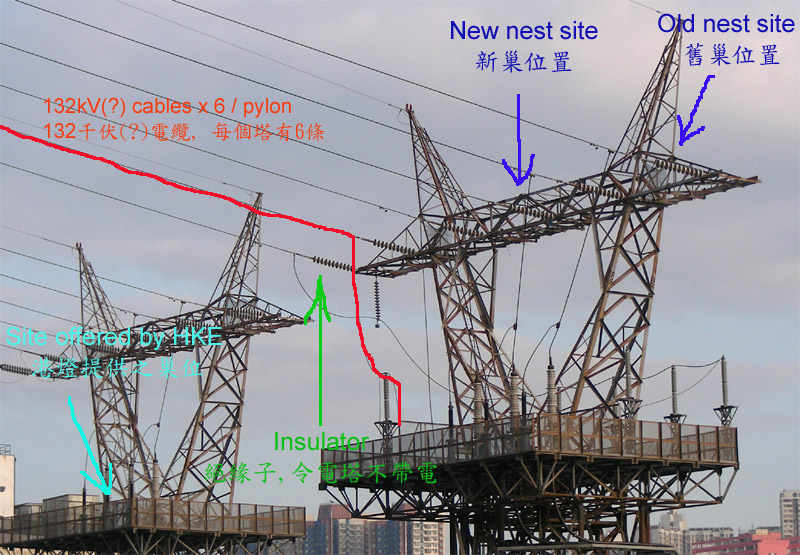
電塔共有兩個,每個有六條高壓電纜(電壓相信有 132 千伏)。
電塔本身不帶電,因為電纜末端有絕緣子隔開。
港燈上星期拆除舊巢之後已在原位裝上細網,防止海雕重建,
近日又在比鄰電塔下的工作台上設立了平台讓海雕造巢。
The pylon is one of a pair. Each pylon carries 6 power cables, probably at 132kV.
The pylons do not carry electricity – they are insulated from the cables by strings of insulators at the cable ends.
After removing the old nest last week, HKE installed a mesh at each end of the pylon to stop the WBSEs from rebuilding.
In the last few days HKE offered an alternative nesting site at the working platform below the adjacent pylon.
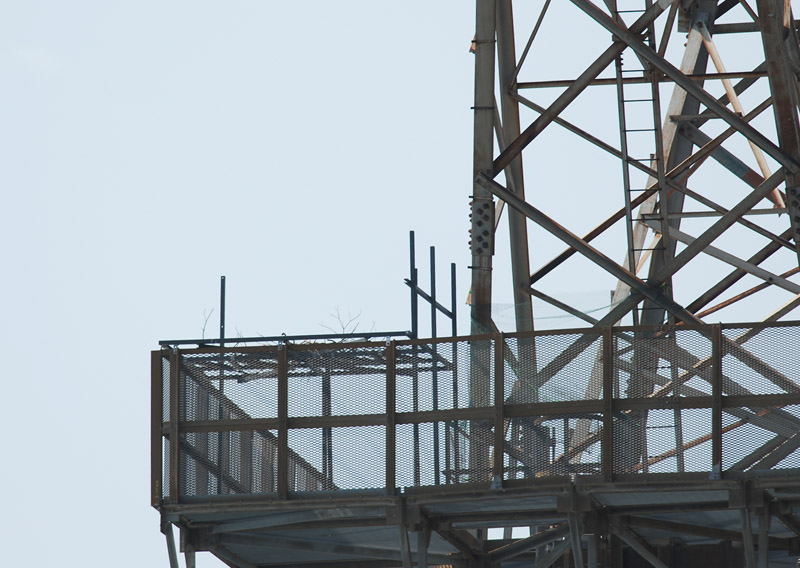
但是海雕似乎對港燈提供的巢位不感興趣
However the sea eagles show little interest in the alternative site
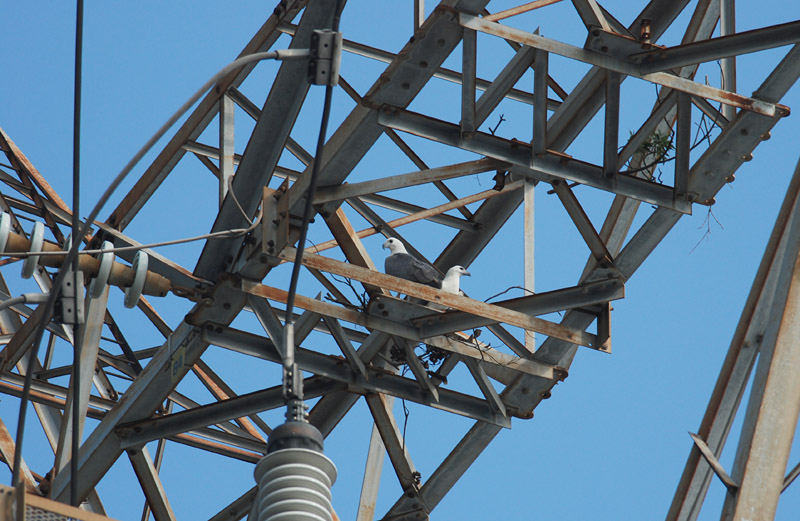
反而選擇了在電塔的中央位置再建新巢
They choose to start again at the centre of the pylon
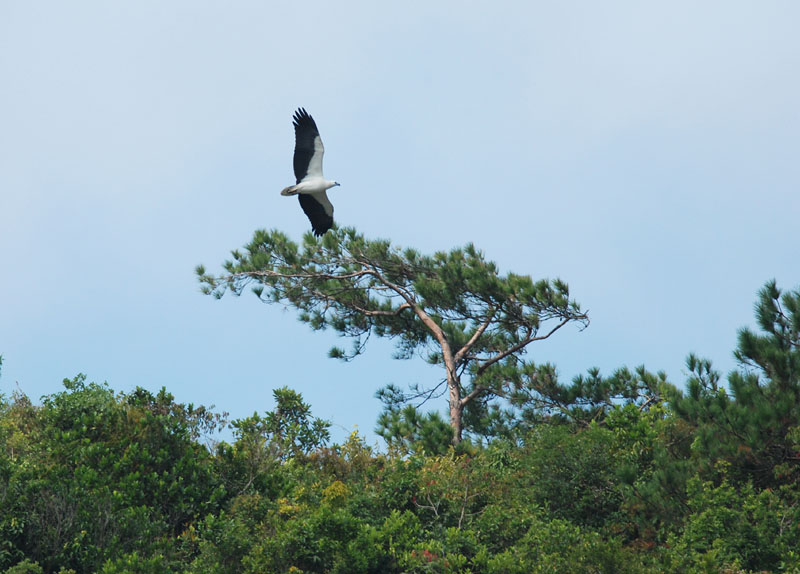
並且在附近的小山上扯下樹枝來作巢材
They snatched twigs from trees on nearby hills for material
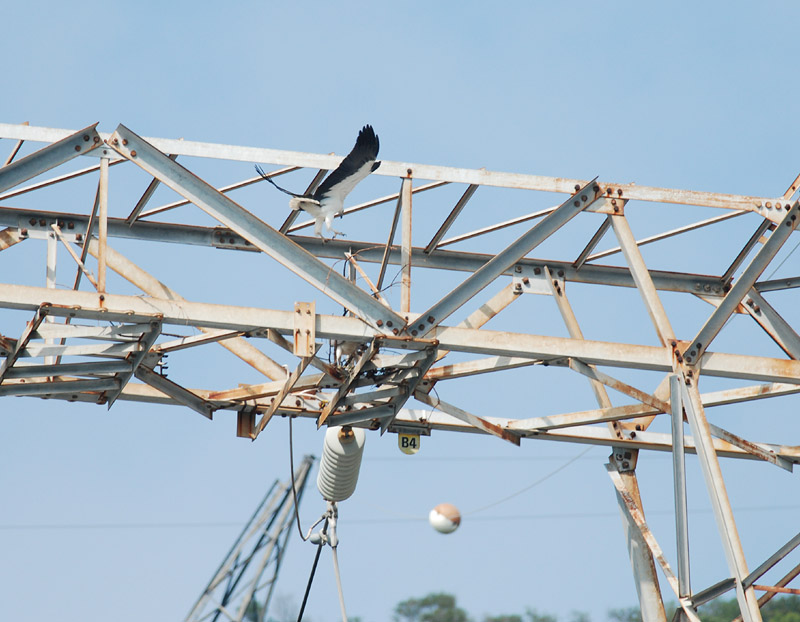
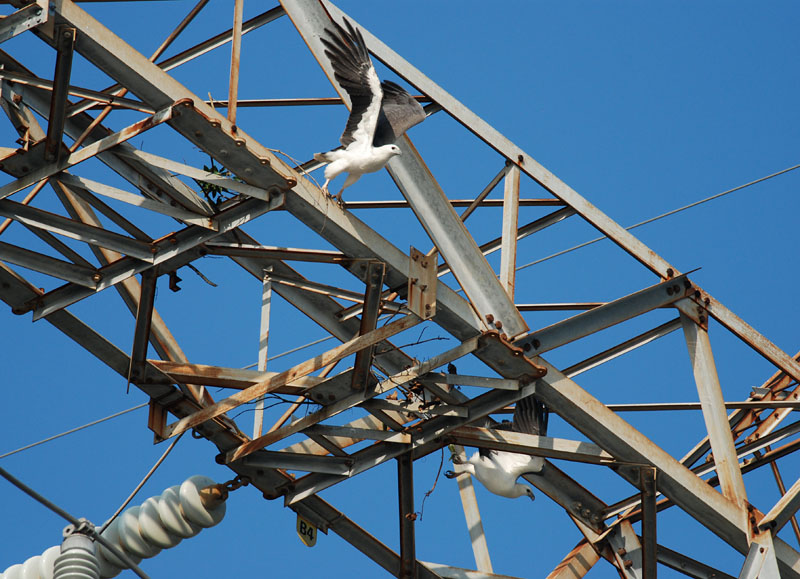
港燈憂慮海雕或牠們的幼鳥會將電纜短路,令電力供應中斷,同時自己又會觸電而死。
從這兩天的觀察所得,海雕多數由電纜的另一方進出巢位,
印象中未見過由電纜方出入,也沒有接近絕緣子,而巢的位置亦與電纜有相當距離。
如果憂慮雛鳥會接近絕緣子,在巢邊裝一塊用絕緣材料造的薄板應該可以解決。
希望港燈細心衡量其中的風險,儘量讓這對稀有的國家二級保護鳥類能夠成功繁殖。
Hong Kong Electric worry that the sea eagles or their young may short-circuit one of the power cable,
thereby interrupting the power supply and electrocuting themselves.
From my observation in the last 2 days, the birds usually approached and left the nest site from the other side of the cables.
I don’t remember seeing them using the cable side, nor finding the birds going near the insulators.
The nest is also some good distance away from the cables.
If the concern is with the chicks getting too close to the insulators,
a piece of insulating material between the nest and the insulators should solve the problem.
I really hope that HKE would review the risks carefully
and as far as possible let this rare couple (Category II protection in PRC) raise their young at the site.


